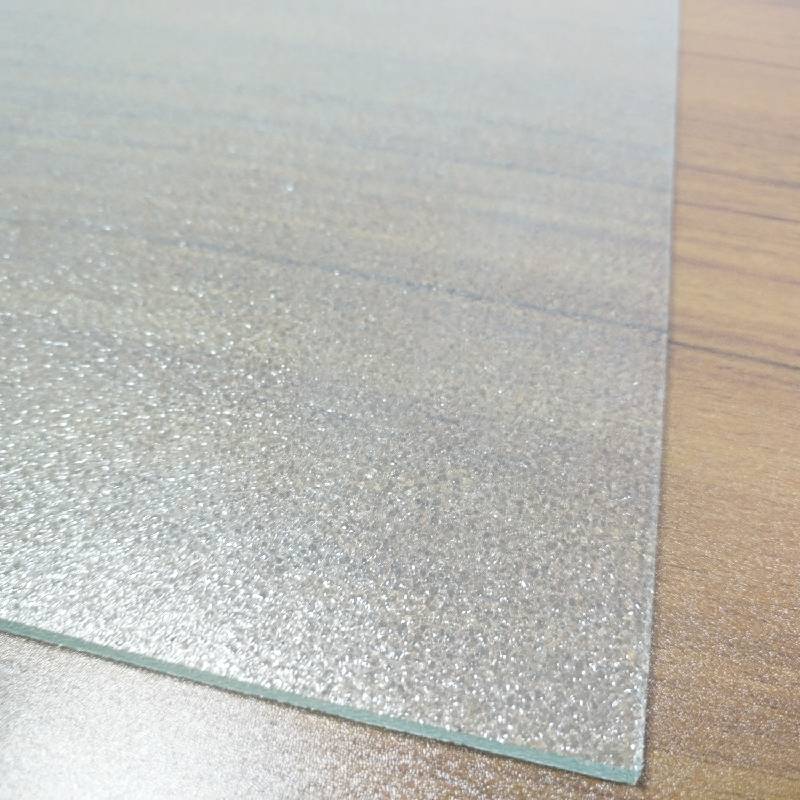Understanding Heat-TEMPERED GLASS Benefits, Applications, and Manufacturing
Heat-tempered glass, also known as toughened glass, is a remarkable material that has revolutionized various industries due to its enhanced strength and safety features. This specialized type of glass undergoes a rigorous manufacturing process that involves heating and rapid cooling, which significantly improves its durability and resistance to thermal stress. In this article, we will explore the benefits, applications, and manufacturing process of heat-tempered glass.
Benefits of Heat-Tempered Glass
1. Increased Strength One of the primary advantages of heat-tempered glass is its increased strength compared to standard glass. The tempering process creates compressive stress on the surface of the glass, thereby enhancing its resistance to impact and pressure. This makes heat-tempered glass an ideal choice for environments where safety is a priority.
2. Safety In the event that heat-tempered glass breaks, it shatters into small, blunt pieces rather than sharp shards. This characteristic significantly reduces the risk of injury, making it suitable for applications in public spaces, homes, and vehicles. Safety is a crucial consideration in sectors like architecture and automotive manufacturing, where tempered glass is commonly used.
3. Thermal Resistance Heat-tempered glass can withstand high temperatures and sudden temperature changes without breaking. This attribute is particularly valuable in applications where the glass is exposed to extreme heat, such as in shower doors, oven doors, and where sunlight intensity fluctuates, allowing for the incorporation of large glass surfaces in buildings.
4. Aesthetic Appeal In addition to its safety and strength benefits, heat-tempered glass is available in various designs and can be treated with coatings to enhance its appearance. The transparency and clarity of tempered glass provide a modern and elegant look, contributing significantly to contemporary architecture and interior design.
Applications of Heat-Tempered Glass
The versatility of heat-tempered glass means it finds use in a wide range of applications
- Architecture and Construction In commercial and residential buildings, tempered glass is often used for windows, facades, and glass doors. Its strength allows for large panels of glass to be used without the need for heavy framing, promoting an open and airy feel in spaces.
- Automotive Industry Heat-tempered glass is standard in car windows, windshields, and sunroofs. The glass’s ability to withstand impacts and prevent shattering ensures passenger safety, making it a vital element of modern vehicle design.
heat tempered glass
- Furniture Glass tables and shelves utilize heat-tempered glass to ensure durability and safety
. The combination of aesthetic appeal and strength makes it a popular material in furniture design.
- Shower Enclosures The use of tempered glass in bathroom shower enclosures not only enhances the safety of users but also adds a sleek and modern touch to bathroom interiors.
- Public Spaces The use of heat-tempered glass in public places, such as airports, shopping malls, and schools, showcases its strength and safety properties, making it a preferred choice for architects and builders.
Manufacturing Process
The manufacturing of heat-tempered glass involves several critical steps
1. Cutting Large sheets of glass are cut to the desired size before the tempering process begins.
2. Heating The glass is then heated to temperatures up to 620 degrees Celsius (about 1,148 degrees Fahrenheit) in a controlled oven. This process is crucial for creating the internal stresses that will give the glass its strength.
3. Cooling After reaching the desired temperature, the glass is rapidly cooled through a process called quenching. This sudden temperature drop creates compressive forces on the surface, enhancing the glass’s strength and thermal stability.
4. Finishing Finally, the tempered glass may go through additional finishing processes, such as polishing or coating, to meet specific aesthetic or functional requirements.
Conclusion
Heat-tempered glass is an exceptional material that combines strength, safety, and aesthetic appeal, making it a preferred choice across various industries. From architecture to automotive applications, heat-tempered glass continues to prove its versatility and reliability. As technology advances, we can expect even more innovative applications for this remarkable material in the future, enhancing safety and design in our daily lives.
 Afrikaans
Afrikaans  Albanian
Albanian  Amharic
Amharic  Arabic
Arabic  Armenian
Armenian  Azerbaijani
Azerbaijani  Basque
Basque  Belarusian
Belarusian  Bengali
Bengali  Bosnian
Bosnian  Bulgarian
Bulgarian  Catalan
Catalan  Cebuano
Cebuano  Corsican
Corsican  Croatian
Croatian  Czech
Czech  Danish
Danish  Dutch
Dutch  English
English  Esperanto
Esperanto  Estonian
Estonian  Finnish
Finnish  French
French  Frisian
Frisian  Galician
Galician  Georgian
Georgian  German
German  Greek
Greek  Gujarati
Gujarati  Haitian Creole
Haitian Creole  hausa
hausa  hawaiian
hawaiian  Hebrew
Hebrew  Hindi
Hindi  Miao
Miao  Hungarian
Hungarian  Icelandic
Icelandic  igbo
igbo  Indonesian
Indonesian  irish
irish  Italian
Italian  Japanese
Japanese  Javanese
Javanese  Kannada
Kannada  kazakh
kazakh  Khmer
Khmer  Rwandese
Rwandese  Korean
Korean  Kurdish
Kurdish  Kyrgyz
Kyrgyz  Lao
Lao  Latin
Latin  Latvian
Latvian  Lithuanian
Lithuanian  Luxembourgish
Luxembourgish  Macedonian
Macedonian  Malgashi
Malgashi  Malay
Malay  Malayalam
Malayalam  Maltese
Maltese  Maori
Maori  Marathi
Marathi  Mongolian
Mongolian  Myanmar
Myanmar  Nepali
Nepali  Norwegian
Norwegian  Norwegian
Norwegian  Occitan
Occitan  Pashto
Pashto  Persian
Persian  Polish
Polish  Portuguese
Portuguese  Punjabi
Punjabi  Romanian
Romanian  Russian
Russian  Samoan
Samoan  Scottish Gaelic
Scottish Gaelic  Serbian
Serbian  Sesotho
Sesotho  Shona
Shona  Sindhi
Sindhi  Sinhala
Sinhala  Slovak
Slovak  Slovenian
Slovenian  Somali
Somali  Spanish
Spanish  Sundanese
Sundanese  Swahili
Swahili  Swedish
Swedish  Tagalog
Tagalog  Tajik
Tajik  Tamil
Tamil  Tatar
Tatar  Telugu
Telugu  Thai
Thai  Turkish
Turkish  Turkmen
Turkmen  Ukrainian
Ukrainian  Urdu
Urdu  Uighur
Uighur  Uzbek
Uzbek  Vietnamese
Vietnamese  Welsh
Welsh  Bantu
Bantu  Yiddish
Yiddish  Yoruba
Yoruba  Zulu
Zulu 

